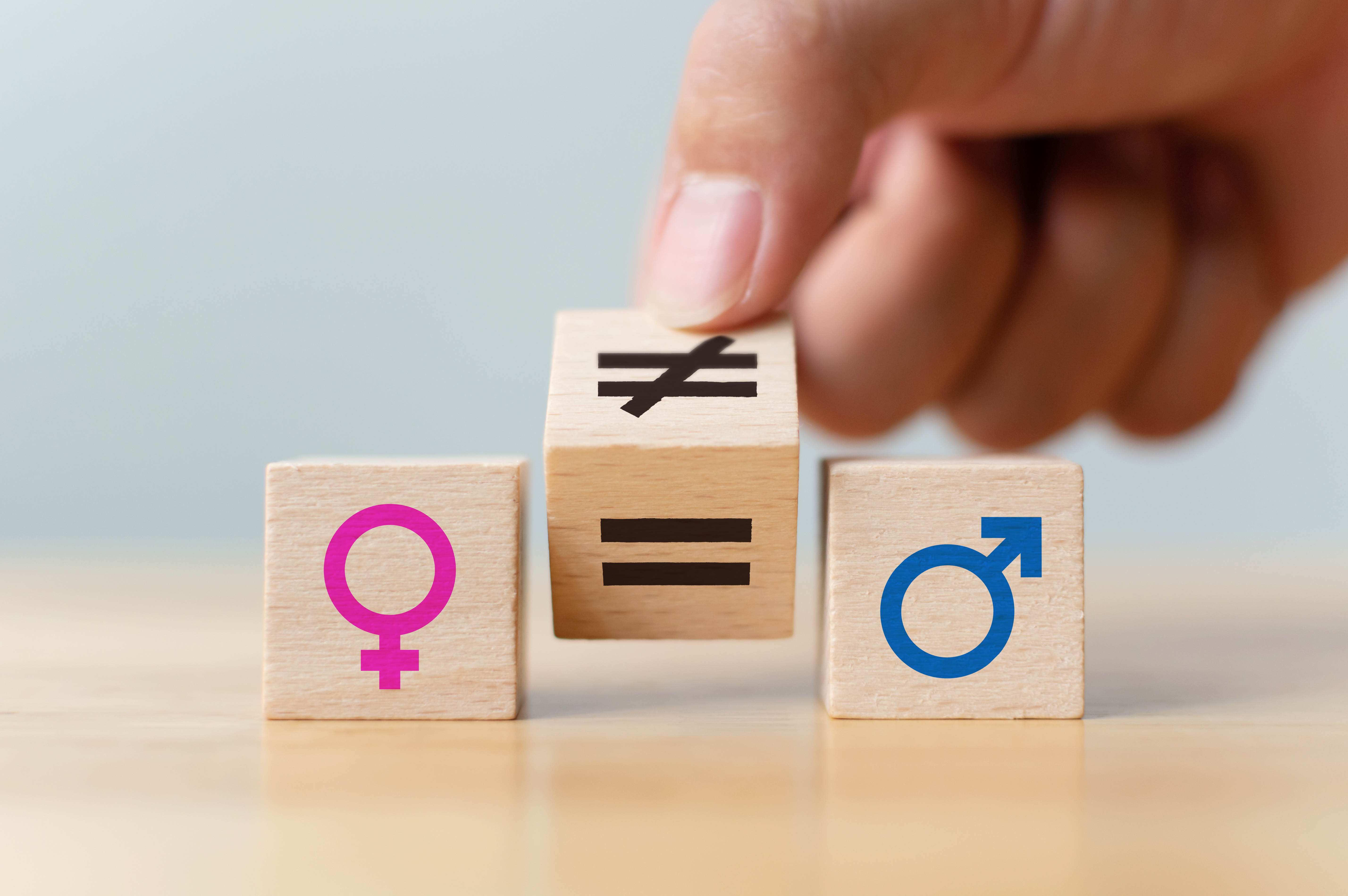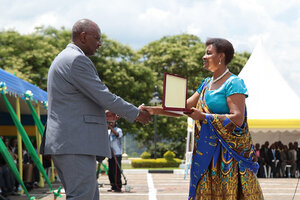Parity between men and women in question: what contemporary developments in female emancipation?
After having questioned the foundations of male domination in the previous article, we now consider the evolution of societies in terms of female emancipation.

Male overvaluation in China and dots in India
In China, despite the fact that this Asian giant has managed to almost equalize the respective literacy rates of men and women since the Mao era (today 97% against 92%), the People's Republic is still faced with a growing deficit in the sex ratio, reaching 1.06 according to official data1. This imbalance is mainly due to the combined effect of the over-valuation of men, the result of traditional Confucian ethics, and the one-child policy implemented between 1979 and 2015, which resulted in 40 to 50 million "missing women".
China's situation is in many respects comparable to that of India, which, despite the introduction in 2008 of a 33% quota for women in its regional legislatures and parliament, has the same human deficit, which is growing. The deterioration of the Indian sex ratio, which is already structurally unbalanced, is closely linked to the generalization of the dowry system, which was previously reserved for the high castes and prosperous families. However, since India entered the market economy in 1991, the amounts involved in the constitution of benefits exchanged between families involved in marriages have soared. The ban on dowries since 1961 by the Indian legislator has unfortunately not been enough to prevent hundreds of thousands of female foeticides and infanticides from being perpetrated each year.

Iran: more educated women ... but under tutelage
The evolution is just as mixed in Iran, where the 1979 Islamic revolution facilitated access to education, especially higher education, for a growing number of women. The islamization of education and the creation of the Islamic Azad University, with its branches in the provinces, had indeed made it possible to remove a certain number of obstacles to girls' education. During the Shah's time, conservative circles too often perceived non-Quranic schools and secondary institutions as places of westernization and deviation. As a result, the placement of education under Islamic tutelage allowed more girls and young women to gain access to knowledge and in turn to enter the workforce, including white-collar jobs and the bureaucracy.

The change of regime was accompanied by the restoration of the compulsory wearing of the veil. In 1936, its prohibition under the monarchy had had the perverse effect of forcing many women from the most reactionary backgrounds to remain cloistered in their homes under the pretext that an unveiled head was tantamount to nudity: a counterproductive effect of a measure that nevertheless aimed at female emancipation. The return of the veil thus had the paradoxical result of allowing most of them to return to the public sphere without the risk of shocking the most conservative. But can we reasonably salute the Islamic revolution for such an initiative?
Behind the advances in education, access to the labour market and freedom of movement made possible for Iranian women by the transformations of the national political system, the fact remains that the end of the monarchy did not allow them to escape from their condition as second-class citizens. A few facts will suffice to support this observation: Iranian women are still not allowed to travel anywhere without their husband's consent; in the event of divorce, the couple's children are given priority to the fathers; in adultery trials, a wife's testimony in court is worth half that of her husband. Add to this the fact that the punishment for this situation is whipping or stoning and contemporary Iranian society has the main ingredients of male omnipotence.
Early sexualization in the United States
Moving from the East to the West, the United States, undoubtedly more progressive and egalitarian in terms of gender relations, is nevertheless representative of a worrying trend that is also noticeable in many Western countries. The current period is indeed marked by an increasingly early sexualization of little girls. The consumer society tends to reduce the personal value of young girls to their sexual appeal, to the exclusion of all other standards (for example, via the thongs pinned on flirting, from the age of 3, or via magazines explaining to 7 to 8 year olds how to be hot or sexy). This overtly sexist marketing defines girls as objects of seduction for men before encouraging them to become autonomous subjects for themselves.
A similar illustration is provided by the toys intended for them. When Barbie was launched in 1959, she was bitterly criticized by feminists for the image of the ideal, sanitized woman she conveyed. Nevertheless, Barbie could be dressed as a pilot, a doctor or an astronaut, whereas today's toy canons favor monolithic "bimbo" dolls such as the Bratz Doll, available only in sex bomb outfits.

There is reason to read in these non-isolated facts a real incitement made to little girls to an adult eroticism, an effect called "Lolita", by reference to the novel of V. Nabokov. More widely, the use of the image of the women that continues to make the publicity when it juxtaposes them to a car or to any other attribute of virility, is infinitely reducing. The only vocation of the woman thus "objectified" is to arouse the consumer's desire to buy.
Amorce d’une féminisation des organes de pouvoir en France
It remains for us to discuss the situation in France before considering the Scandinavian model, by far the most progressive in the world in terms of female emancipation. If France cannot compete on this theme with Norway or Sweden, the evolution of the last two decades allows us to measure the undeniable progress made since the last century. It should be remembered that in 1997, the country of human rights had barely 10% of women deputies in the National Assembly and 6% in the Senate, i.e. hardly better than Iran and as much as Iraq at the same period. However, the passage to the year 2000 saw the introduction of legislation on parity, which has been constantly expanded since then and which includes the principle of alternation on electoral lists, with penalties applied to political parties that fail to comply with the law. As a result, today, 38.7% of the members of the National Assembly are women, compared with 31.6% in the Senate. This evolution shows the undeniable progress made in the integration of women in politics without hiding the still glaring inequalities between the sexes. This is shown, for example, by the under-representation of elected women in city councils, with only 16.1% of councillors being women. However, this resistance in the local political fabric is partly compensated for by the greater presence of elected women in municipal councils (42.4%). We can therefore agree with the anthropologist Françoise Héritier2 that the trend towards feminization of French political life has finally begun. This is also confirmed by the parity of ministers in the current executive3.

But the area that has achieved its greatest sexual revolution is undoubtedly the labor market. It is important to consider that out of the 7 million jobs created in the French economy between 1962 and 2010, 6 million were occupied by women. France has thus gone from a rate of 34% to 66% of working women. In addition, more than 80% of working women are still working when they have two children. The model of the housewife has thus been gradually abandoned to make female work the major social phenomenon of the late 20th century. This fact does not, of course, prevent the survival of a qualitative gap between the jobs held by the two sexes. Inequality is also reflected in women's salaries, which are still 25% lower on average than those of men. The income gap is attributable to part-time work as much as to discrimination in hiring, particularly related to maternity.
And yet, French women today study longer than men (one year longer on average). There are also fewer women who leave school without a diploma (12% versus 19%). In addition, the old divide in terms of the fields of study chosen is gradually narrowing. While the phenomenon is less noticeable in engineering schools, where only 28% of students are women, it is much more significant in medical and pharmacy schools, two eminently scientific disciplines with a majority of women (62% and 66% respectively).
Success of political will in Northern Europe ... and in Rwanda
We must now consider the particular case of the Scandinavian and northern European countries, which stand out for their progressiveness. Finland, Norway, Sweden and Iceland occupy the top four places in the Global Gender Gap4 ranking published each year by the World Economic Forum. This table measures gender gaps in education, health, economics and politics5 . So how do we explain Northern Europe's good score?
It would certainly be wrong to look for the reasons in the traditional structure of Scandinavian societies, which are all fundamentally patriarchal. In fact, the condition of Northern European women remained very similar to that of their European neighbors until the early 19th century. The emancipation of women did not really begin until the turn of the century, mainly under the influence of the rise of the egalitarian social-democratic ideology that spread rapidly throughout the region. Combined with an interventionist welfare state, this trend allowed for major advances such as the granting of the right to vote to women in local elections from the beginning of the 20th century6, or the introduction in 1974 of 16 months of parental leave rather than maternal leave, with a period specially reserved for fathers. Finally, a remarkable sign of the progress of northern European societies in terms of the status of women is that none of the four countries needed to introduce quotas in politics to achieve high rates of representation (all above 40%) in their parliaments. These four leading Northern European nations undeniably offer a more balanced and harmonious approach to gender relations.
But other traditionally more conservative societies that have opted for quotas in politics have also succeeded in ensuring a place of choice for women in the organs of power. This is particularly the case in Rwanda, which voted to reserve 30% of its parliamentary seats for women following the 1994 genocide. Now, 25 years after the new legislation came into force, women represent 61.3% of this elected body. Northern Europe and the Rwandan example show that political will pays off in the fight for parity, because all these countries have accomplished a real revolution in their mentality and in their practices. Male domination is certainly tenacious, sometimes even resilient, but not irredeemable.
From education to freedom of speech
Finally, despite the variability of national situations and the survival of age-old archaisms as well as areas of regression, two statistics on a global scale can legitimize a very relative optimism as to the global trend in the evolution of the status of women. First of all, there are the literacy rates which are clearly increasing: 82.2% for women against 90% for men. These comparative data also show how the gender gap has gradually been levelled out over the past 50 years. Better schooling for girls certainly increases their chances of obtaining qualified jobs and of having better control over their bodies and their health. Another major phenomenon, also related to the increased schooling of girls, is the widespread decline in fertility rates. The world index is now at 2.42 children per woman, compared to 4.7 in 19507 . Without embracing Malthusianism, this phenomenon should be seen as a positive sign. This evolution shows that a more significant proportion of the female population is choosing to have children. Can we deduce from this that these women are more easily able to take charge of their lives?

However, we must be careful not to give a ruling on this issue or to reduce the complexity of the subject to a few general quantitative statistics. Multiple social and cultural resistances oppose the march of female empowerment. Parity is an objective that cannot be envisaged without the extension of the awareness of the protean blockages, intimidations, harassments, and discriminations that hinder this dynamic. The strong tension generated in the West and beyond by movements such as #Metoo or #balancetonporc requires a necessary liberation of the word that responds to the age-old violence against women and could pave the way for a regulation of gender relations.
1 The sex ratio measures the number of men to women in a population. A ratio greater than 1 indicates a deficit of women.
2 Françoise Héritier, Masculin Féminin II, Dissoudre la Hiérarchie, Odile Jacob, Paris, 2002.
3 The current government has 17 women ministers and 15 men.
4https://www.weforum.org/reports/gender-gap-2020-report-100-years-pay-equality
5 France is in 15th place in this ranking.
6 1906 in Finland, 1909 in Sweden, 1913 in Norway, and 1915 in Iceland. The first country in the world to grant women the right to vote in local elections was New Zealand in 1893.
7 The decline is significant in all regions of the world, including sub-Saharan Africa and the Middle and North Africa region, where fertility rates fell from 6.6 to 4.77 and from 6.91 to 2.84, respectively, from 1960 to 2017. See https://www.thelancet.com/journals/lancet/article/PIIS0140-6736(18)32278-5/fulltext & https://www.populationdata.net/2016/09/01/monde-evolution-taux-de-fecondite-1960-2015/

